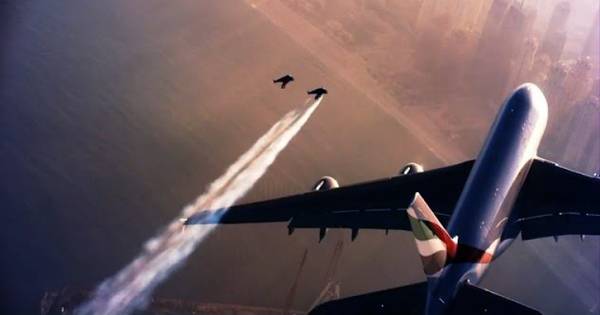An American Airlines pilot who approached LAX reported seeing a strange sight Sunday evening and it is not clear who or why is behind the stunt.
The pilot of American Airlines, who flew to Los Angeles International Airport on Sunday evening, said he saw a man in a jetpack flying several thousand feet from the airport. Fox 11 received a radio transmission between the Los Angeles pilot
and the control tower claiming that the jetpack guy was no less than 300 yards outside his window when he was ten miles from the runway at an altitude of 3,000 feet from the runway. Another pilot from Sky West Airlines confirmed the visit to the control tower, saying, We were just passing by in a jetpack.
Nearly a decade ago, when jetpacks seemed to be exclusively propulsion devices that could expel enough fluid for a half-minute flight, the FAA seemed to disregard them for control. Things have changed, however. Over the past decade, pioneers and design executives like California-based company Jetpack Aviation have been able to propel propulsion designs for more than eight to ten minutes. According to the agency, these jetpacks can be operated as ultralight aircraft under FAA guidelines. There are also other designs such as individual wingsuits that provide long-lasting flight with high altitude. . For example, a private wingsuit design displayed by Jetman Dubai was seen flying at an altitude of 6,000 feet and reached an altitude of 248 miles per hour.
Jetpack Aviation’s JB-10 model has only flown 120 feet and just above the water, according to Jetpack Aviation training materials, but its theoretical maximum altitude is more than 18,000 feet and its engines will continue to run up to 25,000 feet. In a 2018 interview, CEO David Mayman said he personally carried the new JB-11 jetpacks about 5,000 feet above sea level but only 200 birds above the water.
So is it possible that they were actually flying in the air when they saw a man in a jetpack usually reserved for commercial aircraft? The short answer is yes. Jetpacks have come a long way since achieving the first flight of 10 or 20-seconds in the
The 1960s, running at an altitude of about 1.2 meters (4 feet). When the first aircraft of the Bell Rocket Belt broke the safety instructor and the pilot fell to the ground 2.5 meters (8 feet), the skill and skill development of the pilot’s packs also increased greatly, which crushed his knee.














